“Still round the corner there may wait, a new road or a secret gate.” – J. R. R. Tolkien, writer
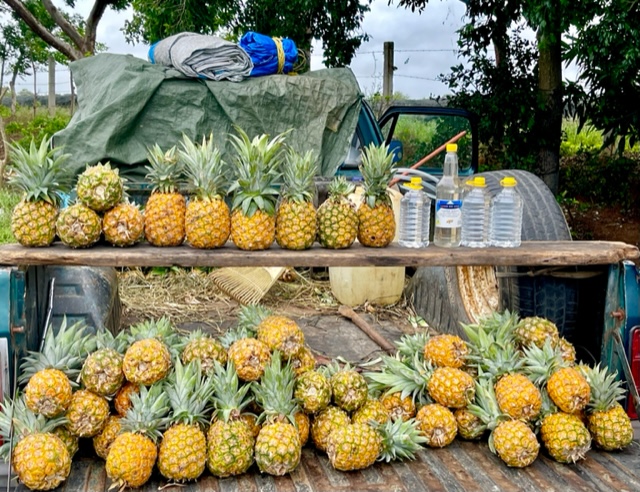
Now for the “fun” part ~ this segment of the Mayan/Aztec tour would be our longest bus ride; over 10 hours to the city of Palenque, but fortunately, we had a few surprising stops along the way to break it up.
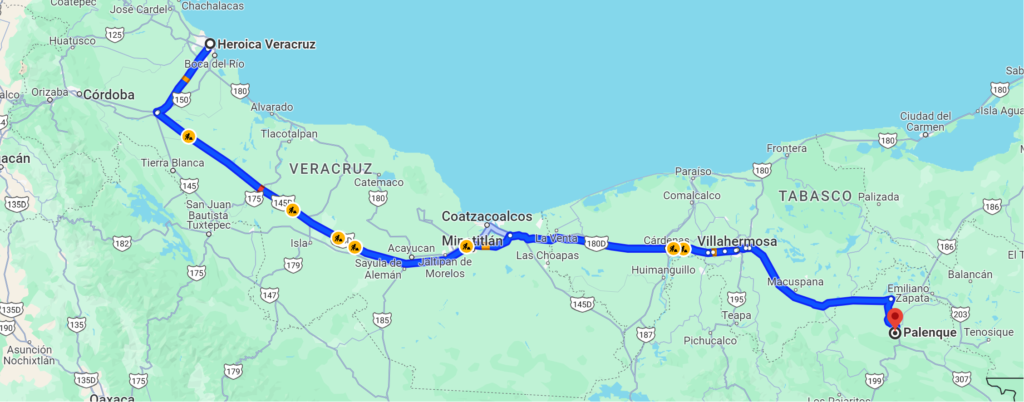
La Venta Archaeological Park is an important pre-Columbian archaeological site located in this, our fourth Mexican state, Tabasco, and near the capital city of Villahermosa. It’s renowned for its significant, ancient Olmec civilization ruins.
La Venta encompasses pyramids, plazas, ceremonial platforms, and other structures. It also contains various stone sculptures, altars, and remnants of the Olmec civilization, providing clues to the earliest known major Mesoamerican civilization that flourished 1500 BCE to about 400 BCE.
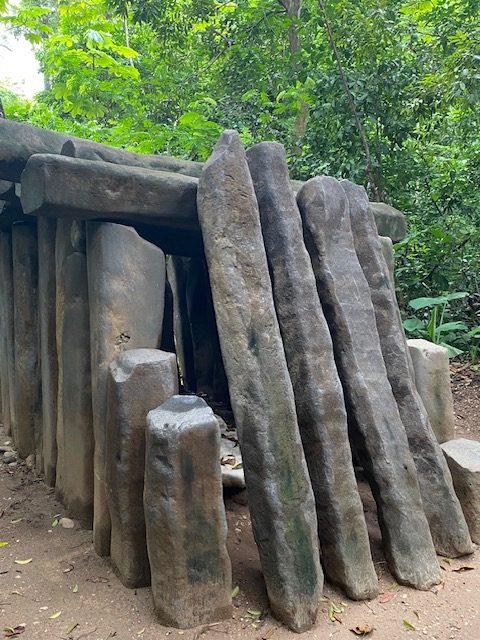
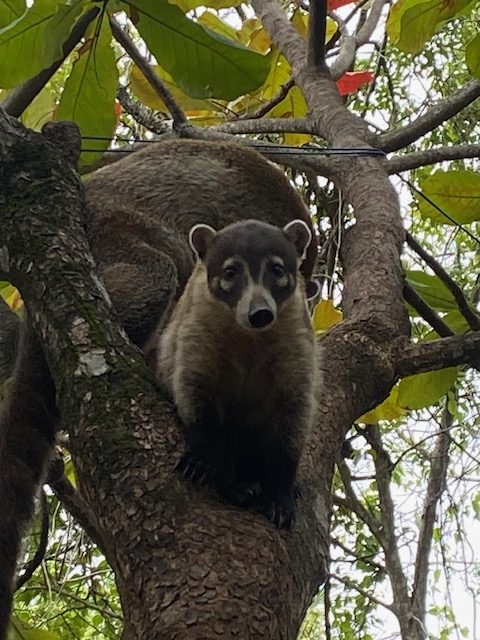

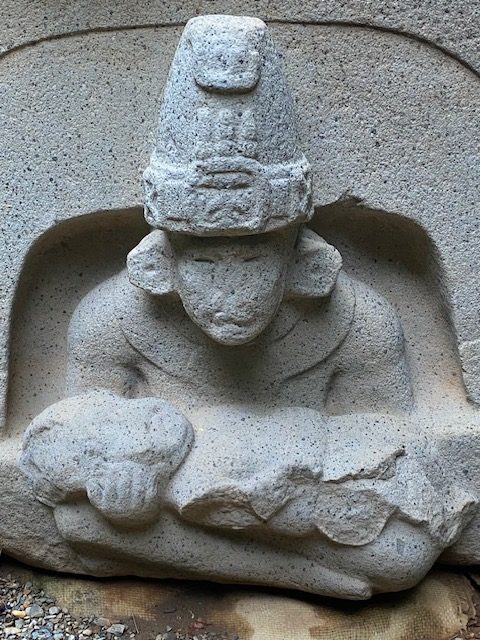
Usually, when entering city parks, think Central Park in NYC, Chapultepec in Mexico City, etc., and you leave the city noise behind, but this wasn’t the case at La Venta – the traffic noise was relentless and the mosquitos hungry; feasting on my arms and legs.
This southeast area is known for its vast plantations of pineapples, and especially the Piña Miel (honey pineapple) for its sweetness. In México, if there’s a plantation, then you can be sure someone’s selling its fruits and veggies nearby on the side of the road.

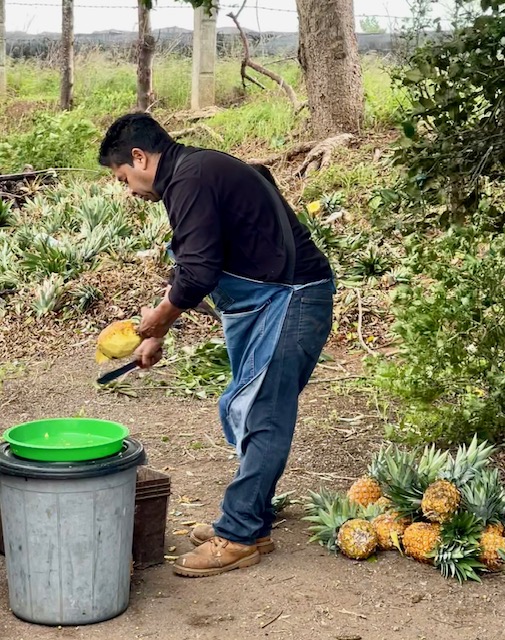

Indeed, our bus pulled over on this busy highway, and we happily exited to taste some freshly-picked pineapples. OMG! After savoring a fresh-cut slice of pure sweetness, I upped the ante for my next slice by peppering it up with chili flakes, giving the fruit a whole different taste sensation. With the juices dribbling down my face, I reached for another slice. Our fellow travelers couldn’t get enough either; keeping our vendor busy slicing away; I’m sure he went home after our fruitful stop.
Lunch break was a roadside Mexican parrillada (grilled steak restaurant); with three food options: rib eye steak, chicken, and a Caesar salad as the vegetarian option. The meat-eaters all commented on the quality and tastiness of the beef – the cow was butchered that morning and fed on native grass.
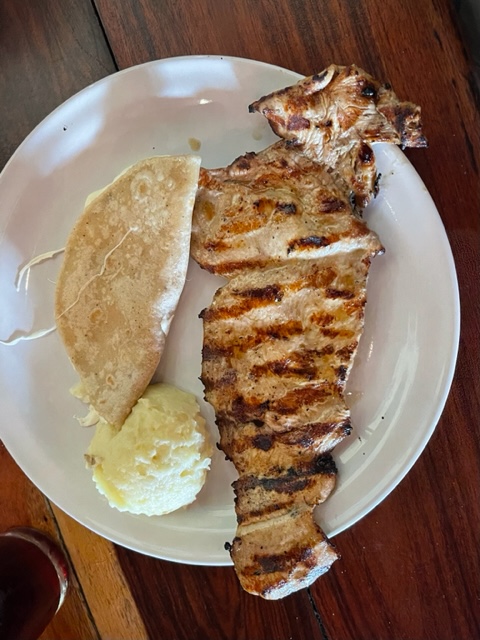
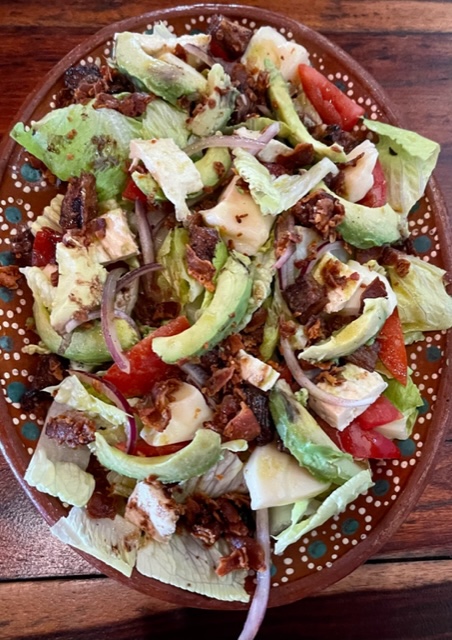
For me, I was ready for a change and a nice salad spoke to me, so I jumped at it. Let’s just say that this was a most creative Caesar salad – the only thing familiar about it was its name. The serving size was big enough to serve the entire table, as it arrived piled high with lettuce, tomato wedges, queso fresco (farmer cheese), red onions, grilled chopped pineapple and sliced avocados; all enveloped in a light cilantro dressing. The combination of flavors was delicious, but just not a traditional Caesar. Still, all-in-all, the vegetarian choice was a welcomed change.
We finally arrived in Palenque in the early evening, puckered out and beat from the road, but anxious to explore our next ancient ruins mañana.
Palenque
Palenque was a prominent ancient Mayan city, and also its more modern namesake city, both located in the southern state of Chiapas (Mexican state #5). In ancient times it was known in the Itza Language as Lakamhaʼ, “Big Water or Big Waters.”
The thriving city-state of the Maya civilization, it flourished during the Classic period, 600 to 900 AD. Now, Palenque is known for its remarkable ruins that begin dating back to circa 226 BC.
The most famous structures within the site are the Temple of the Inscriptions, housing the tomb of the Mayan ruler, Pakal, and the Palace with its unique architecture and exquisite artwork. We’d seen Pakal’s funeral mask, his objects and ceremonial tomb recreated at the Museum of Anthropology in Mexico City.
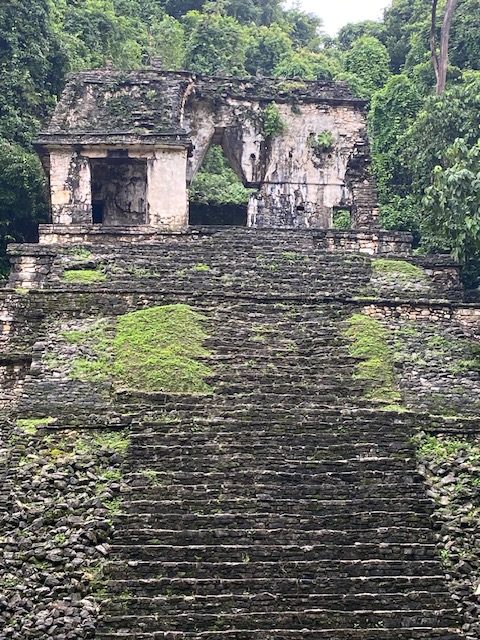
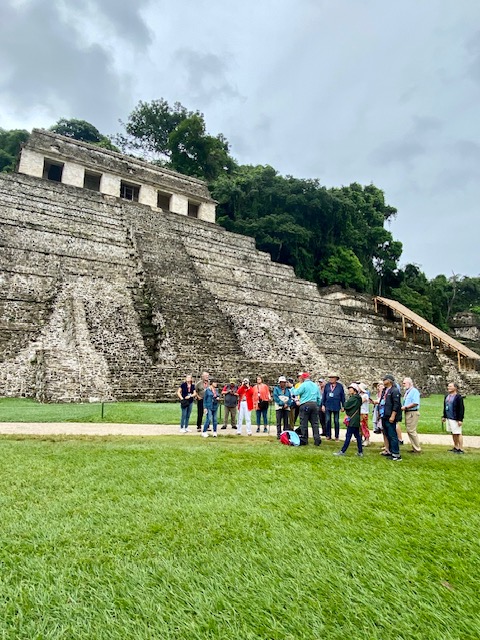

After its decline, the city was overgrown by the jungle of cedar, mahogany, and sapodilla trees, but has since been excavated and restored to its splendor.
As you can see, the site showcases magnificent structures, that include temples, palaces, pyramids, and various other ceremonial buildings adorned with intricate carvings and sculptures.
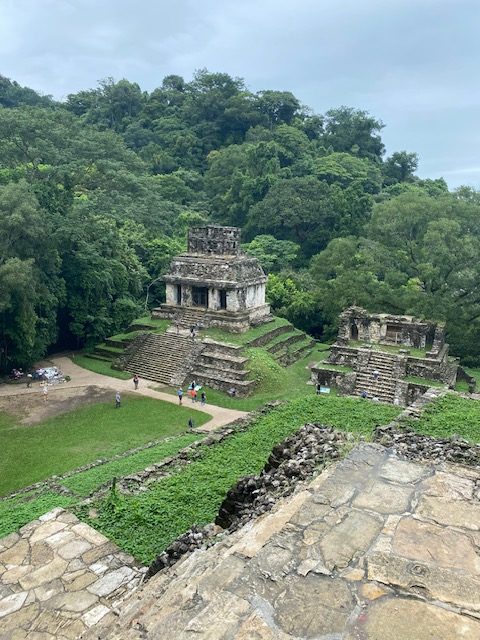
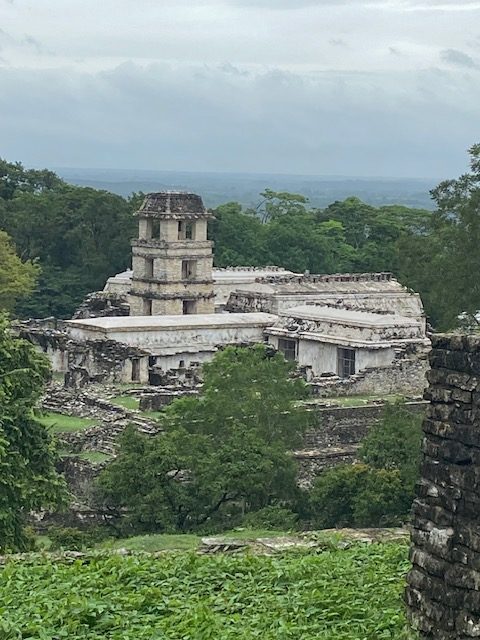
Palenque is considered a medium-sized site, smaller than Tikal, Chichén Itzá, or Copán, but it contains the finest architecture, sculpture, roof comb and bas-relief carvings that the Mayas produced.

With the afternoon at leisure, we set out to explore the modern day city of Palenque. It serves as the gateway for visitors and tourists exploring the ancient ruins. Our group followed a local guide for lunch, but we broke away from the pack and headed out to the best taco joint in town, Tropi Tacos, on the plaza.



I ordered a torta mixta: carne al pastor, carne asada and chorizo, and a mushroom quesadilla. My eyes were bigger than my stomach, for they were monster portions. David ordered two tacos: one pastor, one asada. My motto to good eating is to eat like a local!



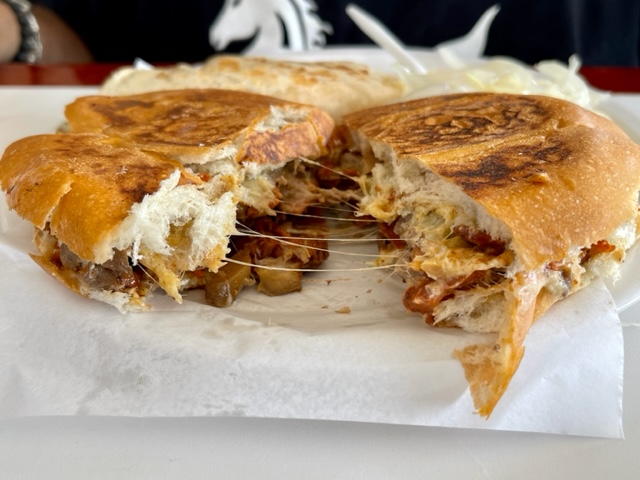
After, we got to spend another hour walking about the center, and returned to our hotel for a well-deserved afternoon nap.
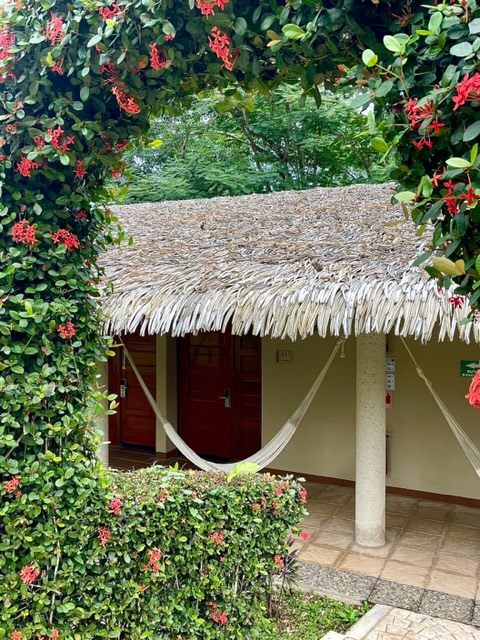
A special dinner was waiting for us this evening at Bajlum Restaurant, serving dishes made with ingredients of pre-Hispanic origin. The food was sourced from the tropical jungle; grown or collected by the indigenous Chole and Tzeltal families, who are heirs to these lands. The chefs, Ylda Limón and Fabian Limón, would transform and produce amazing results in promoting these local delicacies.
The “New Pre-Hispanic Cuisine,” is a gastronomic project created to rescue, promote, disseminate, and provides the Palencana Mayan Culinary its proper due and place that it deserves in Mexican Gastronomy. What they aim to do is maintain the quality, creativity, nutritional benefit, and the historical, cultural worth and value to survive for future generations to enjoy.
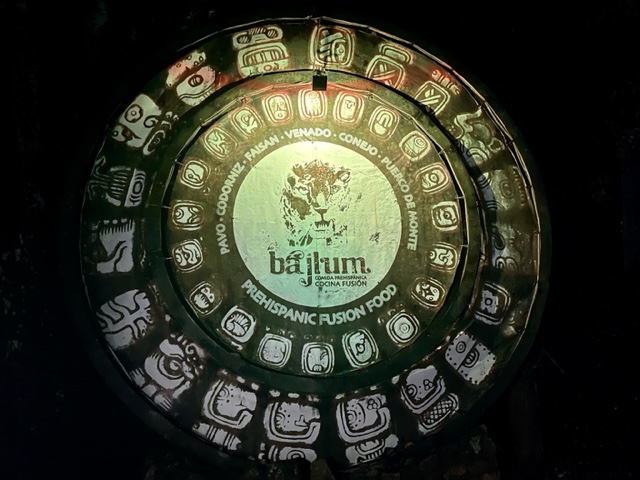
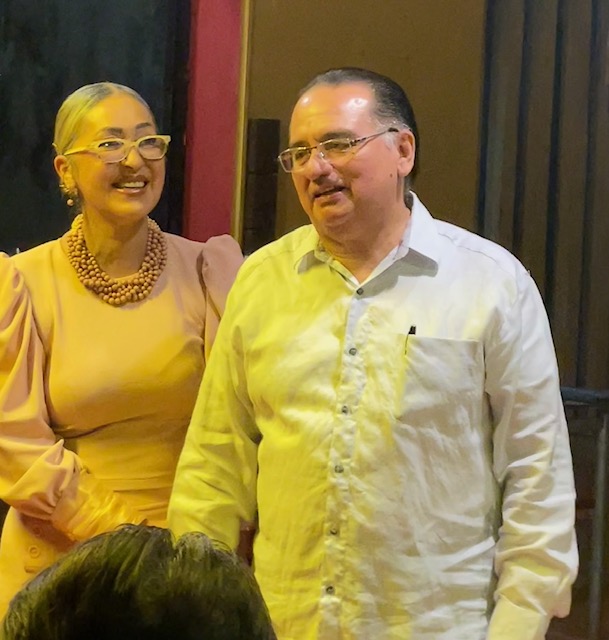
Our special Mayan umami dinner was presented by a friendly and welcoming husband-and-wife team, along with their kids. Their concept is to keep Mayan cooking traditions alive; with eating and foraging for what’s available in the forest. They’re extremely enthusiastic about their project. Each of the following courses were fully described as they were presented before us.
My ability to multi-task came in handy, since I was writing and tasting dishes as they were placed in front of me; here’s our palate pleasing, unique menu:
“Blood of Jaguar” cocktail made of Mata Lily Floral Essence, Tequila and Mezcal. Suave. Smooth.

Tortilla from Palenque, made with masa and yucca; the yucca adds softness and pliability.
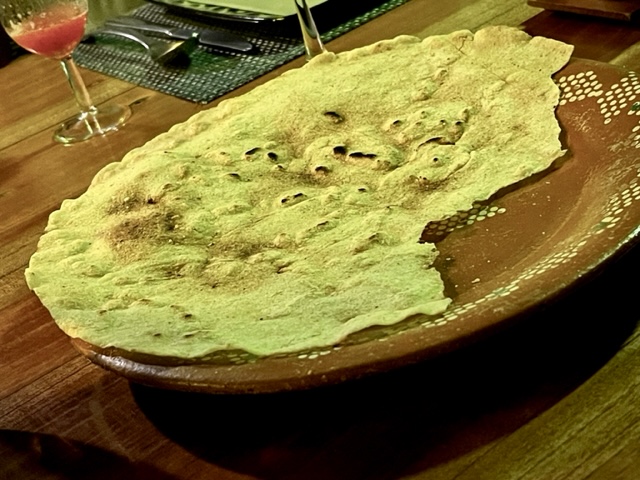
Mushroon Spread – an ear forest mushroom; it had the consistency of foie gras and a star fruit aguas fresca – one thing I love about México is their variety of the refreshing aguas frescas (not pictured).
Wild pumkin cream soup with a dusting of ground grasshopper. He will not be jumping off my bowl!
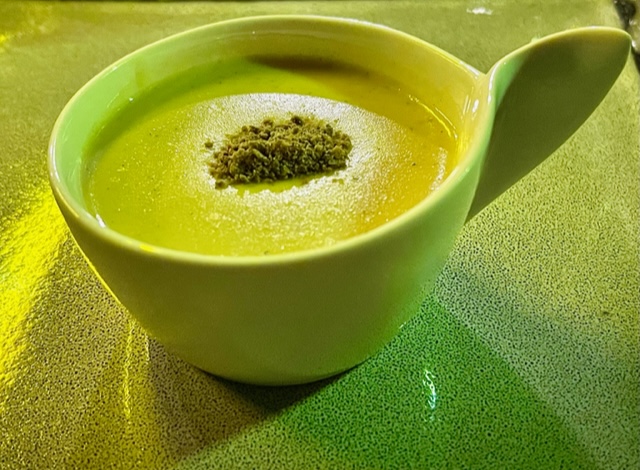
Turkey in a cacao sauce, with masa corn and honey, and with a sweet potato mash.

Fish in a tomato confetti sauce, with soft corn caviar.

Pumkin flan with a wild tomato jelly (sweet and sour combination).

Tomorrow brings us into the Yucatan Peninsula and along the shores of the Gulf of Mexico.
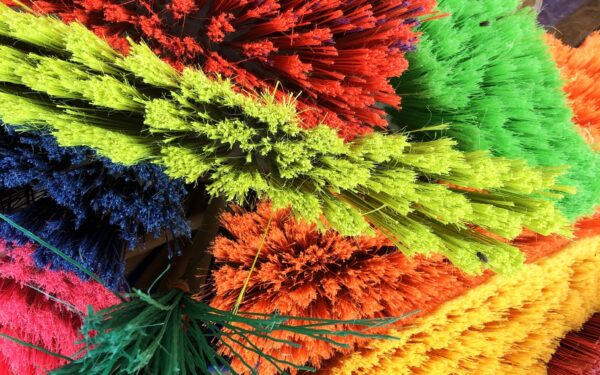

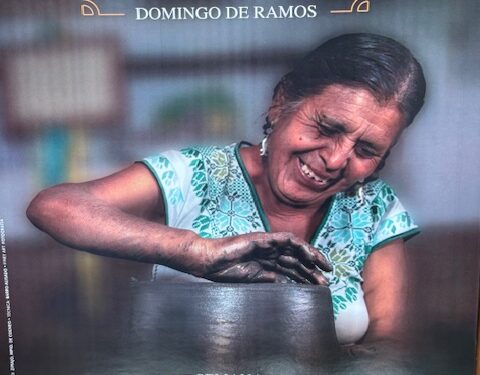

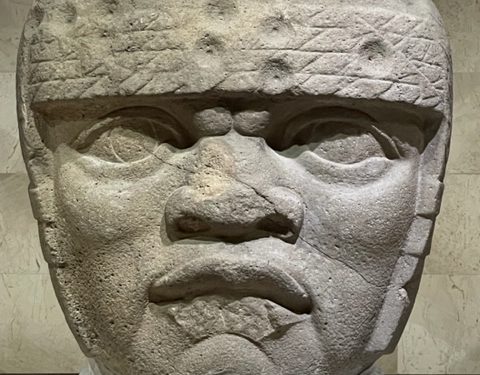
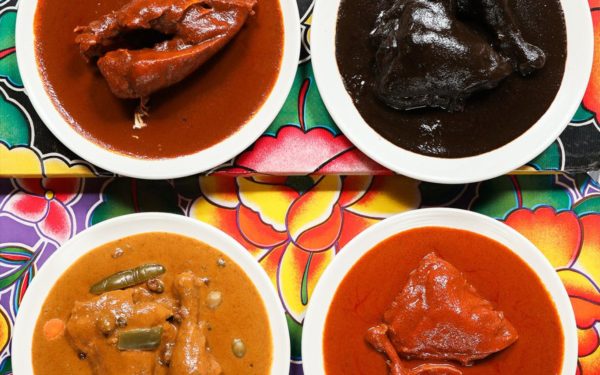
What an incredible tour! Both La Venta Archeological Park and Palenque must be fascinating. Especially well preserved Palenque. Mexican food. I’m convinced there’s nothing better. Would love to try the pre-Hispanic cuisine. All your foodie photos look delish!
Another delight-filled trip! Thanks for sharing the history and culture with us. The food and drinks looked so yummy! Can’t wait for your next report.